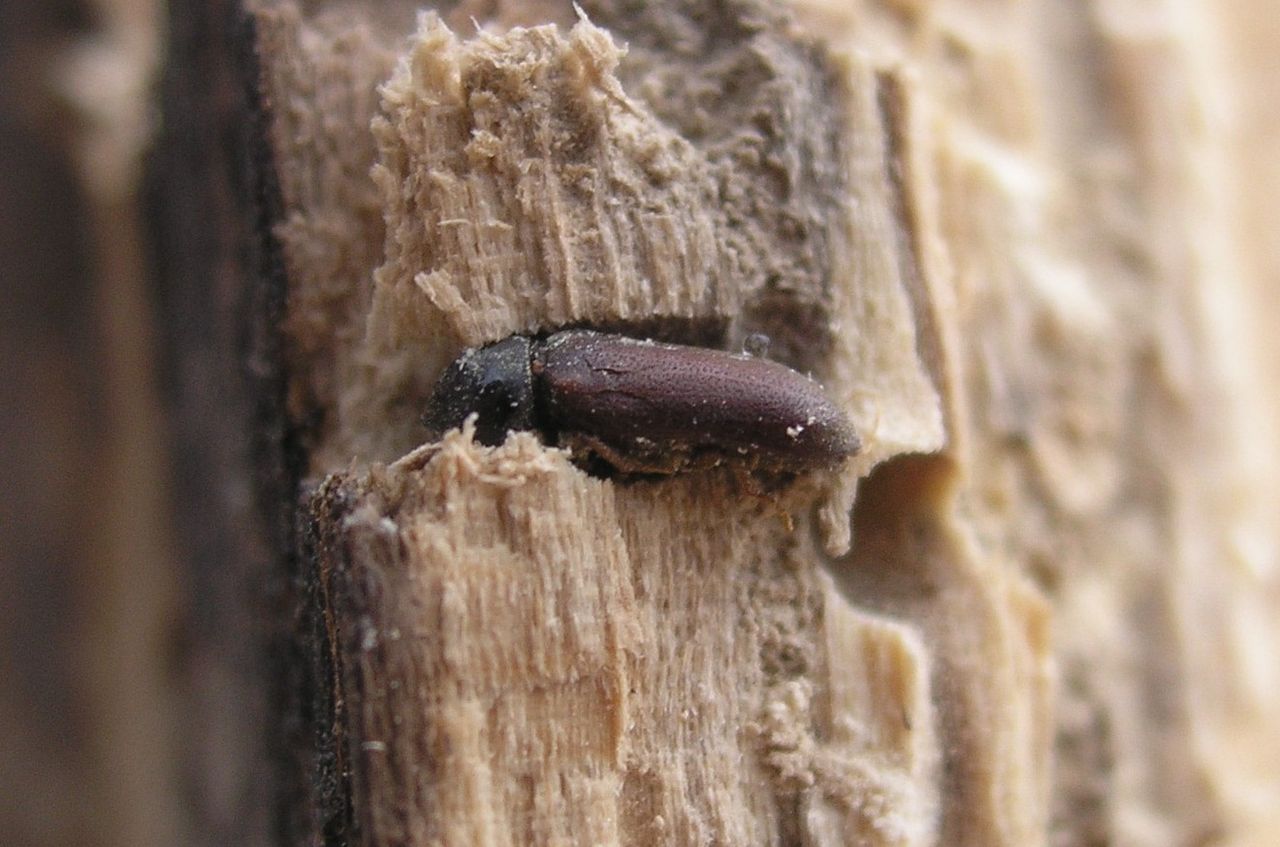
Borers
- Are your floorboards becoming brittle ?
- Got squiggly lines in your polished timber floors ?
- Have you found dust piles in imported furniture ?
Borers can be found in hardwood and softwood timbers. Depending on the species and the life of the seasoned timber will determine if the borer is active or in active.
Borers in flooring timbers which can give a squiggly line affect once the timbers have been polished are called Anobium borers. These borers are always ‘presumed active’ unless they have had a previous treatment carried out to them. The best way is to remove or replace the timbers but treatment procedures could be another possibility.
Borers can also be found in furniture. Furniture can be treated using a fumigation technique. It is wise to get all furniture with borers in them treated especially if they have just been imported from overseas. Overseas borers may be exotic and dangerous so have them treated in the correct manner.
Most common borers found in sound timber in Sydney are ANOBIUM BORER and LYCTUS BORER.
Anobium Borer (Furniture Beetle) – Life cycle of 1-3 years. Commonly found in Baltic pine floors, cupboards and staircases. Anobium Borer does not attack hardwood timbers. Evidence of Anobium Borers is usually found when floorboards are sanded back exposing squiggly lines. This Borer is very slow acting and usually they have been there for many years. Over time they make the timber/s very brittle. Structurally, most houses are made of hardwood timbers so damage is limited.
Treatment of the affected timbers is limited depending on the situation. Most ground floor flooring timbers can be treated by applying a registered pesticide to the underside of all affected and susceptible timbers, once a year for 3 years. This will interrupt and kill the life cycle of the Borer. With furniture, staircases and timbers affected on multiple storey dwellings, replacement of affected timbers is the only option.
To find out if your Borer damage is active, draw a circle around all entry/exit holes found on or under the timbers affected and check at 3 monthly intervals. If there are no more holes appearing they are presumed inactive. If more holes appear it is presumed active. By reducing dampness and improving cross flow ventilation within your subfloor you can reduce ideal breeding spots for this Borer.
Lyctus Borer – Damage is usually found in subfloor bearers and joists, roofing rafters and tile battens. Minimal amount of damage are usually found to timbers involved as Lyctus Borers only attack the sapwood which by law only consists of a maximum 25% of any structural timber. The other 75% of the effected piece is heartwood; it remains structurally sound and is not considered necessary to treat. If the timbers have been milled over 5 years prior then the borer is deemed to be deceased.
